#pioneers of South Indian film industry
Explore tagged Tumblr posts
Text
PK Rosy birth anniversary: Google Doodle celebrates first lead Malayalam actress. Who was she?
PK Rosy, the first lead Malayalam actress, is being celebrated by Google Doodle on her birth anniversary. The Indian actress and dancer, who made her debut in the South Indian film industry in the 1930s, paved the way for generations of actors and actresses in the Malayalam film industry. PK Rosy’s debut film was Vigathakumaran (The Lost Child, 1928).(Google) Born in Thiruvananthapuram, India…
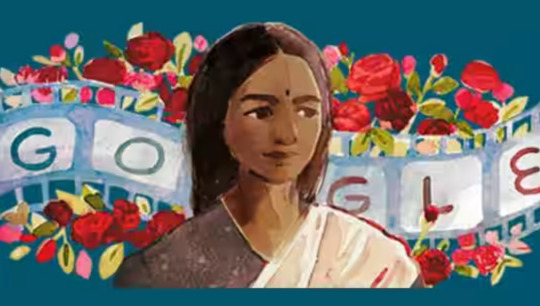
View On WordPress
#birth anniversary#female actors#female actors in Indian cinema#female actors in Malayalam cinema#female actors in South Indian cinema#first lead actress#Google celebrates PK Rosy#Google Doodle#Google Doodle tribute#Google tribute to PK Rosy#Indian actresses#Indian film#Indian film history#Indian film industry#Malayalam actress#Malayalam actresses#Malayalam cinema#Malayalam film history#Malayalam film industry#pioneers of Indian film industry#pioneers of Malayalam film industry#pioneers of South Indian film industry#PK Rosy#PK Rosy achievements#PK Rosy biography#PK Rosy birth#PK Rosy birth date#PK Rosy birthplace#PK Rosy career#PK Rosy cause of death
0 notes
Text
Aishwarya Rai: The Crowning Glory
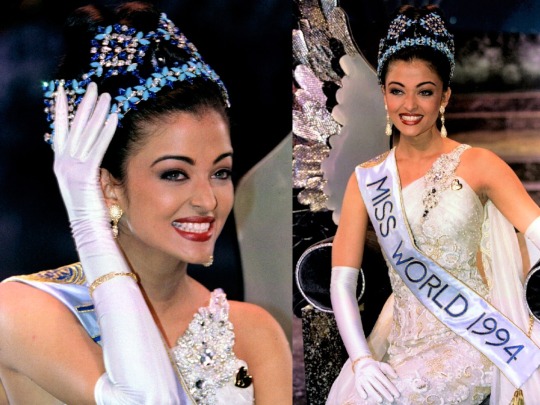
Aishwarya Rai Bachchan's journey to becoming an international icon took a pivotal turn in 1994 when she was crowned Miss World. Her win not only showcased her stunning beauty but also her dedication and ability to transcend national boundaries to resonate with a global audience.
Born on November 1, 1973, in Mangalore, Karnataka, India, Aishwarya Rai Bachchan had her first brush with the limelight when she pursued modelling alongside her architectural studies. Her striking looks and charismatic presence swiftly caught the public's eye, which eventually led her to the prestigious Miss India pageant. Although she was the hot favourite, she placed as the first runner-up to Sushmita Sen. This twist of fate did not deter her aspirations, as it set the stage for her next conquest—the Miss World pageant.
Competing against contestants from all over the globe, Aishwarya won the Miss World 1994 title, held in Sun City, South Africa. She won not merely for her outer beauty but also for her eloquent answers, poise, and grace. During her Miss World reign, she was known for her humanitarian work, which included her role as a pioneer for the 'Polio Eradication Campaign' and her participation in fundraising for various charities.
The luminosity of her Miss World title paved the way for a prodigious acting career, enabling Rai to establish herself as a leading figure in the Indian film industry. Her exceptional career in Bollywood began soon after her reign as Miss World, and she's also been a Goodwill Ambassador for UNAIDS. For her contributions to the arts, Aishwarya Rai Bachchan has been honoured with numerous accolades, including the prestigious Padma Shri by the Government of India in 2009, and in 2012, the Ordre des Arts et des Lettres by the Government of France.
Aishwarya's Miss World win remains a defining moment in her life, marking her ascent to global fame and carving out a path for her stellar career in entertainment and philanthropy.
3 notes
·
View notes
Text
The Trailblazers of Indian Music: Masters of Melody
Indian music has always been a kaleidoscope of traditions, cultures, and innovations. Over the decades, it has transcended its roots to reach global audiences. At the heart of this transformation are a few extraordinary artists whose work has become synonymous with creativity and excellence. Among them, names like Santhosh Narayanan, Salim–Sulaiman, Thaman S, Sachet-Parampara, and GV Prakash shine brightly. These luminaries represent the evolving face of Indian music, each contributing a unique flavor to the industry.
The Unconventional Brilliance of Santhosh Narayanan
Santhosh Narayanan has carved a niche for himself in the Tamil music industry with his distinctive compositions. Unlike many of his contemporaries, he thrives on experimentation. His ability to blend traditional Tamil folk sounds with electronic and global music has earned him international acclaim. Albums like Kabali and Jigarthanda have not only been commercial successes but also critically acclaimed for their boldness. Santhosh’s journey exemplifies how breaking the rules can lead to phenomenal success.
Salim–Sulaiman: Bollywood’s Dynamic Duo
For decades, Bollywood music has been shaped by the contributions of Salim–Sulaiman, a duo that embodies versatility. From creating soul-stirring scores for films like Dor to delivering high-energy tracks like Chak De! India, their range knows no bounds. Beyond films, their collaborations with international artists and performances on global stages have cemented their place as cultural ambassadors of Indian music. Their ability to innovate while staying true to their roots makes them an enduring force in the industry.
The Energy of Thaman S
Thaman S is a powerhouse in South Indian music, known for his electrifying compositions. He has a knack for producing foot-tapping numbers that resonate with audiences of all ages. His soundtrack for Ala Vaikunthapurramuloo was a massive hit, earning him widespread recognition. Beyond his compositions, Thaman’s role as a playback singer and his charisma in live performances have further endeared him to fans. His ability to infuse traditional South Indian elements into contemporary music has made him a trendsetter in the industry.
Sachet-Parampara: A Symphony of Emotions
The Bollywood music scene has been revitalized by the fresh and heartfelt compositions of Sachet-Parampara. Known for their romantic ballads, the duo has a unique ability to evoke deep emotions through their music. Hits like Bekhayali and Maiyya Mainu have become anthems for love and heartbreak. What sets them apart is their seamless blend of classical and modern elements, creating songs that feel both timeless and contemporary. Their chemistry, both as musicians and performers, is a key ingredient of their success.
GV Prakash: A Multi-Talented Maestro
GV Prakash is a name synonymous with versatility. Starting his career as a music director in Tamil cinema, he quickly rose to fame with hits like Yathe Yathe. Over the years, he has explored various facets of entertainment, including acting, but his passion for music remains unwavering. His ability to craft melodies that appeal to both the masses and critics has earned him a loyal following. Whether it’s his energetic dance numbers or soul-stirring ballads, GV Prakash’s music reflects his deep understanding of the Tamil cultural ethos.
Conclusion
The journeys of these iconic artists—Santhosh Narayanan, Salim–Sulaiman, Thaman S, Sachet-Parampara, and GV Prakash—are a testament to the ever-evolving landscape of Indian music. Their dedication to their craft, willingness to experiment, and ability to connect with audiences on a personal level have made them pioneers in their own right. Through their work, they have not only enriched Indian music but also brought it to the global stage.
0 notes
Text
The Evolution of Indian Music Through Legends
The Indian music industry is a rich tapestry of melodies and rhythms that have evolved over centuries, shaped by the genius of legendary artists. From the haunting strains of classical ragas to the pulsating beats of contemporary hits, the journey of Indian music is a story of transformation and innovation. Legends such as A.R. Rahman, Ilaiyaraaja, Bhimsen Joshi, and others have played pivotal roles in bridging the gap between tradition and modernity, leaving an indelible mark on the cultural landscape.
The Roots: Classical Foundations
Indian music has its roots deeply embedded in classical traditions that date back thousands of years. The structured framework of Hindustani and Carnatic music laid the foundation for all subsequent genres. Legends like Pandit Ravi Shankar, who took the sitar to global audiences, and M.S. Subbulakshmi, whose devotional renditions captivated millions, are pivotal figures in this era. Their mastery of classical techniques combined with their innovative approaches set a high standard for musicians across generations.
The Golden Era of Film Music
The mid-20th century marked a turning point for Indian music with the rise of film music as a dominant force. Bollywood became a melting pot where classical influences merged with folk and Western styles to create a unique soundscape. Legendary composers like R.D. Burman, Naushad, and Madan Mohan redefined music with their memorable scores.
The playback singing legends of this era, such as Lata Mangeshkar and Kishore Kumar, became household names. Their ability to convey emotion through their voices brought depth to cinematic storytelling. Lata's ethereal voice captured love, loss, and longing, while Kishore's versatility ranged from soulful ballads to peppy numbers.
Folk Meets Modernity
India's diverse cultural fabric is reflected in its folk music, which has been a source of inspiration for many legendary artists. Bhupen Hazarika, known as the "Bard of Brahmaputra," blended Assamese folk music with global influences, creating timeless compositions. Similarly, Gurdas Maan's Punjabi folk songs carry the essence of rural life while addressing contemporary issues.
The integration of folk elements into mainstream music became a hallmark of legendary composers like Ilaiyaraaja, whose work seamlessly wove Tamil folk traditions with orchestral arrangements. This synthesis not only preserved India's rich heritage but also brought it to the forefront of popular music.
The Global Ambassadors
The 20th century also saw Indian musicians making their mark on the international stage. Pandit Ravi Shankar’s collaborations with The Beatles introduced Indian classical music to the West, sparking a wave of global interest. Zakir Hussain, with his unparalleled tabla skills, furthered this legacy by collaborating with artists across genres, from jazz to world music.
A.R. Rahman emerged as a modern-day global ambassador for Indian music. With his Oscar-winning compositions for Slumdog Millionaire and a string of successful collaborations, Rahman brought Indian music to international acclaim. His ability to blend classical ragas with electronic music, rock, and global influences has redefined the industry.
The Regional Powerhouses
While Bollywood often dominates discussions, regional music industries across India have produced legends who have significantly contributed to the evolution of Indian music. Ilaiyaraaja, often referred to as the "Mozart of Madras," revolutionized Tamil cinema music with his intricate compositions and pioneering use of technology. His music transcends language barriers, resonating with audiences worldwide.
In the realm of Kannada music, Dr. Rajkumar's contributions as a singer and actor are legendary. Similarly, Manna Dey's Bengali compositions and Yesudas's work in Malayalam and other South Indian languages showcase the richness of regional music traditions.
Contemporary Innovators
As the digital age dawned, Indian music underwent another transformation. New legends emerged, embracing technology and global trends while staying rooted in their heritage. Shreya Ghoshal and Arijit Singh are two such icons, whose versatility and emotive singing have made them the voices of a new generation.
Amit Trivedi, known for his innovative approach to film scores, has carved a niche by blending Indian and Western styles. His work in films like Dev.D and Queen demonstrates how modern legends are pushing boundaries, keeping Indian music fresh and relevant.
Bridging Generations
One of the hallmarks of Indian music legends is their ability to bridge generations. Artists like A.R. Rahman and Lata Mangeshkar have collaborated with younger musicians, fostering an exchange of ideas and ensuring the continuity of their legacies. Platforms like Coke Studio India and MTV Unplugged have also played a crucial role in this evolution, providing a stage for traditional and contemporary musicians to collaborate.
The Impact of Technology
The advent of streaming platforms and digital technology has significantly influenced the music industry. Legends of the past are now accessible to a global audience, and their timeless works continue to inspire budding musicians. The digitization of archives ensures that the contributions of legends like Bhimsen Joshi, R.D. Burman, and others remain relevant for future generations.
Conclusion: A Legacy of Innovation
The evolution of Indian music is a testament to the vision and creativity of its legends. From the soulful strains of Bhimsen Joshi’s classical renditions to the groundbreaking compositions of A.R. Rahman, these artists have not only preserved India's musical heritage but also propelled it into the future. As the industry continues to evolve, the influence of these legends serves as a guiding light, ensuring that Indian music remains a vibrant and dynamic force on the global stage.
Their legacy reminds us that innovation and tradition are not mutually exclusive but rather complementary forces that drive artistic excellence. With each generation building on the foundations laid by these legends, the journey of Indian music promises to be as inspiring and transformative as its storied past.
0 notes
Text
Top Film producer in India
India’s film industry is one of the largest and most diverse in the world, producing films across various languages and regions. The success of these films isn’t just credited to the actors, directors, or screenwriters, but also to the individuals who work behind the scenes — film producers. Film producers play a pivotal role in shaping the film industry by overseeing the entire production process, arranging financing, and ensuring the film’s vision comes to life. In India, several top film producers have left an indelible mark on the industry, not only through their cinematic brilliance but also through their ability to innovate and push boundaries.
Top Indian Film Producers Shaping the Industry
Many Indian film producers have set benchmarks in the global film market, producing films that resonate both domestically and internationally. Top names like Karan Johar, Aditya Chopra, and Farhan Akhtar have dominated the Hindi film industry with their exceptional productions. Karan Johar, through his production house Dharma Productions, has produced blockbuster films such as Kabhi Khushi Kabhie Gham and Student of the Year, contributing to Bollywood’s global appeal. Aditya Chopra, the man behind Yash Raj Films, has been instrumental in creating some of the biggest hits in Hindi cinema, including Dilwale Dulhania Le Jayenge.
Another key figure in Indian cinema is Deepan Boopathy, a film producer who has consistently worked behind the scenes to deliver captivating films across different genres. His ability to innovate and collaborate with creative minds has made him one of the rising stars among Indian producers. His projects have garnered praise for both their storytelling and technical brilliance.
Top Female Film Producers in India
In a traditionally male-dominated industry, several female film producers have emerged as powerful voices, breaking stereotypes and challenging norms. Ekta Kapoor is a pioneer in this regard, producing numerous hit TV serials and films through her production house, Balaji Telefilms. Her films, including The Dirty Picture and Once Upon a Time in Mumbai, have been critically acclaimed and commercially successful.
Zoya Akhtar, another prominent female producer, has been pushing the envelope with content that challenges the traditional Bollywood formula. Films like Zindagi Na Milegi Dobara and Gully Boy have redefined how we view Indian cinema, focusing on strong narratives and rich character development.
Film Producers Revolutionizing Regional Indian Cinema
While Bollywood often steals the limelight, regional film industries are crucial to the diversity of Indian cinema. Producers like Deepan Boopathy have also contributed significantly to Tamil cinema. His work in Tamil films has added value to Tollywood (the Tamil film industry), blending local flavors with universal appeal. Regional cinema, with the help of such producers, has begun to compete with Bollywood on both quality and box office performance.
In addition to Tamil, the Telugu, Malayalam, and Kannada film industries are flourishing, thanks to forward-thinking producers. Names like S. S. Rajamouli, who produced the Baahubali series, and Dil Raju, known for his work in Telugu cinema, have made a significant impact.
Legendary Film Producers in Tollywood
Tollywood, the Telugu film industry, has seen several legendary producers who have transformed the landscape of Indian cinema. Daggubati Ramanaidu, often considered a trailblazer, produced films in multiple languages, earning the Guinness World Record for producing the most films by an individual. Allu Aravind, another key figure, has contributed massively to Tollywood with hits like Magadheera and Geetha Govindam. These producers have played a key role in pushing Tollywood into the global spotlight.
Best Film Producer in South India
South Indian cinema is known for its larger-than-life storytelling and technical brilliance, with Tamil, Telugu, Kannada, and Malayalam industries producing a significant number of films each year. In the Tamil film industry, Deepan Boopathy has emerged as a highly influential figure. His work stands out for its diversity and creativity, making him one of the top producers in the southern part of India.
In the Kannada film industry, Vijay Kiragandur, who produced KGF: Chapter 1, has been lauded for bringing a pan-India appeal to Kannada films. Similarly, producers like Antony Perumbavoor in the Malayalam industry continue to churn out high-quality cinema that is critically acclaimed and commercially successful.
In conclusion, the top film producers in India, such as Karan Johar, Ekta Kapoor, Deepan Boopathy, and Allu Aravind, have played an integral role in shaping the future of Indian cinema. These producers continue to innovate and challenge the norms, ensuring that Indian films remain diverse, impactful, and globally recognized.
0 notes
Text
Best Fashion Designers and Clothing Stores in Delhi: Elevate Your Style with the Capital's Finest
Delhi, a city known for its rich cultural heritage and vibrant fashion scene, is home to some of India’s most celebrated fashion designers and high-end clothing stores. Whether you're looking for bridal couture, contemporary fashion, or bespoke tailoring, the capital city offers an array of options to satisfy your style cravings. From the bustling lanes of Chandni Chowk to the chic boutiques in Hauz Khas, here’s a guide to the best fashion designers and clothing stores in Delhi that promise to elevate your wardrobe to the next level.

Click Here For More Deatils:https://www.oppvenuz.com/vendors/fashion-designer-and-cloth-store/?city=delhi
1. Sabyasachi Mukherjee
- Specialization: Bridal Couture, Luxury Fashion, Traditional Indian Attire
- Location: Mehrauli, Delhi
- Why Choose Them: Sabyasachi Mukherjee is a name synonymous with luxury and opulence in the Indian fashion industry. His flagship store in Mehrauli is a dream destination for brides-to-be, offering exquisite bridal lehengas, sarees, and couture pieces that are a perfect blend of traditional craftsmanship and modern aesthetics. Sabyasachi’s designs are known for their intricate embroidery, rich fabrics, and regal silhouettes, making them a top choice for anyone looking to make a grand statement at their wedding or special event.
2. Manish Malhotra
- Specialization: Celebrity Fashion, Bridal Couture, Glamorous Evening Wear
- Location: South Extension, Delhi
- Why Choose Them: Manish Malhotra is one of India’s most iconic fashion designers, renowned for his glamorous and contemporary designs that have graced the red carpets and Bollywood films. His store in South Extension is a go-to destination for high-end fashion, offering everything from opulent bridal wear to chic evening gowns. Manish Malhotra’s designs are characterized by their luxurious fabrics, intricate embellishments, and modern silhouettes, making them a favorite among celebrities and fashion-forward individuals.
3. Ritu Kumar
- Specialization: Traditional Indian Wear, Bridal Wear, Heritage Textiles
- Location: Khan Market, Delhi
- Why Choose Them: Ritu Kumar is a pioneer in the Indian fashion industry, known for her revival of traditional Indian textiles and crafts. Her store in Khan Market offers a wide range of bridal wear, ethnic attire, and prêt-à-porter collections that reflect India’s rich cultural heritage. Ritu Kumar’s designs are a perfect blend of tradition and modernity, making them ideal for those who appreciate timeless elegance and craftsmanship in their clothing.
4. Tarun Tahiliani
- Specialization: Bridal Couture, Luxe Prêt, Contemporary Indian Fashion
- Location: DLF Emporio, Vasant Kunj, Delhi
- Why Choose Them: Tarun Tahiliani is known for his luxurious and contemporary approach to Indian fashion, offering a range of couture and prêt-à-porter collections that are both elegant and innovative. His store at DLF Emporio is a haven for brides and fashion enthusiasts looking for statement pieces that combine traditional Indian elements with modern design sensibilities. Tarun Tahiliani’s creations are known for their exquisite draping, intricate detailing, and a perfect fusion of East and West.
5. Shantanu & Nikhil
- Specialization: Contemporary Couture, Menswear, Bridal Wear
- Location: Defence Colony, Delhi
- Why Choose Them: Shantanu & Nikhil are celebrated for their contemporary and avant-garde approach to Indian fashion. Their store in Defence Colony offers a wide range of couture, bridal wear, and menswear that is characterized by bold silhouettes, unique textures, and a modern aesthetic. Their designs are perfect for the modern bride or groom looking for something unconventional and stylish for their wedding day.
6. Abu Jani Sandeep Khosla
- Specialization: Bridal Wear, Luxury Couture, Indian Heritage Fashion
- Location: Mehrauli, Delhi
- Why Choose Them: Abu Jani and Sandeep Khosla are known for their extravagant and luxurious designs that celebrate India’s rich heritage. Their store in Mehrauli is a treasure trove of bridal wear, couture, and bespoke pieces that are known for their intricate embroidery, rich fabrics, and timeless appeal. Abu Jani Sandeep Khosla’s creations are perfect for those who want to make a grand and regal statement at their wedding or special occasion.
7. Raw Mango
- Specialization: Sarees, Handloom Textiles, Ethnic Wear
- Location: Chhatarpur, Delhi
- Why Choose Them: Raw Mango, founded by designer Sanjay Garg, is known for its contemporary approach to traditional Indian textiles. The store in Chhatarpur offers a wide range of sarees, lehengas, and ethnic wear that are crafted from handloom textiles and reflect a minimalist yet sophisticated aesthetic. Raw Mango’s designs are perfect for those who appreciate understated elegance and traditional craftsmanship with a modern twist.
8. Ogaan
- Specialization: Multi-Designer Store, Contemporary Fashion, Luxury Wear
- Location: Hauz Khas Village, Delhi
- Why Choose Them: Ogaan is one of Delhi’s most popular multi-designer stores, offering a curated selection of clothing and accessories from some of India’s top designers. The store in Hauz Khas Village is a must-visit for fashion enthusiasts looking for contemporary and luxury fashion. Ogaan’s collection includes everything from bridal wear to ready-to-wear pieces, making it a one-stop destination for all your fashion needs.
9. Good Earth
- Specialization: Sustainable Fashion, Handcrafted Textiles, Luxe Loungewear
- Location: Khan Market, Delhi
- Why Choose Them: Good Earth is renowned for its commitment to sustainability and ethical fashion. The store in Khan Market offers a range of handcrafted textiles, loungewear, and accessories that are made using eco-friendly materials and traditional techniques. Good Earth’s designs are perfect for those who value sustainability and wish to incorporate it into their wardrobe with style and elegance.
10. Anita Dongre
- Specialization: Bridal Couture, Eco-Friendly Fashion, Luxury Prêt
- Location: DLF Emporio, Vasant Kunj, Delhi
- Why Choose Them: Anita Dongre is one of India’s leading fashion designers, known for her eco-friendly approach to fashion and her commitment to sustainable practices. Her store at DLF Emporio offers a wide range of bridal couture, luxury prêt, and ethnic wear that is both stylish and environmentally conscious. Anita Dongre’s designs are perfect for the modern bride who wants to look stunning while also making a positive impact on the planet.
Conclusion
Delhi’s fashion scene is a vibrant blend of tradition and modernity, offering something for every style preference. Whether you’re a bride-to-be, a fashion enthusiast, or someone looking to elevate your wardrobe, the city’s top fashion designers and clothing stores offer an unparalleled shopping experience. From the opulent creations of Sabyasachi and Manish Malhotra to the sustainable elegance of Good Earth and Anita Dongre, Delhi’s fashion landscape is rich with options that cater to every taste and occasion.
0 notes
Text
Interview – Manohara Kumar, Toppan Speciality Films
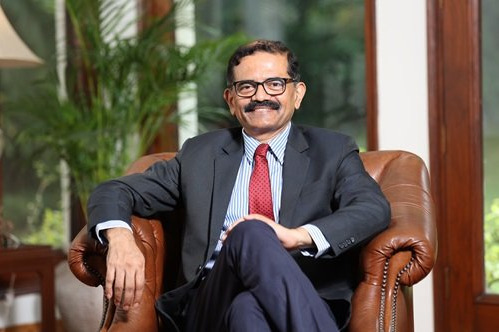
In a freewheeling interview with Packaging South Asia’s Nilutpal Thakur at Toppan Speciality Films' Chandigarh office, the CEO & whole-time director speaks about their flagship GL-BOPP films, the packaging industry, and how the company is doing its bit to develop sustainable alternatives in packaging

Packaging South Asia met Manohara Kumar, Chief Executive Officer and Whole-Time Director, at Toppan Speciality Films’ office in the towering Nexus Elante mall, a landmark in Chandigarh’s Industrial & Business Park. The discussions ranged from the company’s transition, the launch of the GL films in India and their target markets, and the future of the packaging industry. The sustainability angle and recycling as an alternative figured prominently in our conversation, considering the interaction happened just ahead of a key meeting for a Global Plastics Treaty held in Ottawa, Canada.
GL films and its usages
Manohara – who began his journey with TSF more than 30 years ago as a trainee before steering the organization in its growth trajectory – clarified that at present, only BOPP (biaxially oriented polypropylene)-based GL Films are being manufactured at the India plant. We asked him if the Indian market is ready for these advanced films and even prepared to pay a premium or if it is aware of what sustainability problems these solutions can solve. Manohara answered by saying TSF is known to be a pioneer in providing futuristic products and, hence, known to create markets for sustainability solutions rather than pitching in existing market segments. “Mostly, brands and customers are informed about the solution, but we as a responsible partner will make sure that they are updated on the advantages and challenges (if any) before they start deploying these sustainable solutions.”
The GL film range, which is used in a wide variety of fields, including the food, pharmaceutical, and industrial materials sectors, is said to be a sustainable alternative to metallized and other films. The GL-SP film uses a BOPP substrate to enable mono-material packaging that caters to the increasing demand for improved recyclability.
According to Manohara, though the target solutions for GL-PET are well established globally, for GL-BOPP, the targeted solutions are under development. For GL, TSF targets sustainability solutions of the mono-material family and transparent laminates, which can be used primarily in dry-content products such as powders, biscuits, and cookies. Some of TSF’s partners are Pepsi, Unilever, Perfetti, Nestle, Marico, and ITC. Among converters, Toppan works with Uflex, Huhtamaki and Amcor among several others.
“TSF will continue to serve both the Indian and the export market as brand requirements are present in India as well as globally,” he said, adding Toppan Speciality Films and Toppan together have developed the GL-BOPP solutions and this will remain the prime focus of TSF rather than other GL ranges that Toppan produces from its global units. “The primary responsibility of TSF will be manufacturing these films. Sales and business development will be taken care of by Toppan’s exports unit and TSF (in India).”
Outside India, the Toppan Group has production bases in Japan and North America (Georgia, US). A new barrier film production unit is expected to start operation in the Czech Republic by 2024-end.
Advanced machines at heart of production

In addition, there are six vacuum metallizers, three thermal extrusion laminators, three coating lines, and one CPP line. Another CPP line along with three more metallizers is on the anvil. TSF has more than 20 slitters, including primary & secondary slitters. The company has also ventured into the production of masterbatches.
“We are gearing up to commission a new hybrid BOPP/ BOPE line in 2025. There are many other such strategic projects in the pipeline which the world will witness in the next 5-7 years,” he said, adding the company has DSIR-approved and NABL-certified R&D and quality labs. “Our team’s strength lies in our highly qualified scientists, experienced management, and skilled workforce.”
In 2022, TSF started a dedicated plastic recycling facility in Punjab’s Fatehgarh Sahib, some 40 kilometers from the Bhai Mohan Singh Nagar plant. The waste plastic recycling plant spread across two acres has a customized cleaning and processing plant with 100% wastewater recycling.
Capacity-building, cast films & differentiation
With a capacity of 80,000 tons per annum (TPA), Toppan Speciality Films, which was established in 1990 as Max Speciality Films, has an employee strength of more than 500 on its rolls with a turnover of about US$ 180 million (approximately Rs 1,500 crore) and a global footprint in 45 countries. Coming to capacity building, in the past five years, more than two dozen biaxial film lines have been installed in India, according to industry sources.
Asked if this would not commoditize the market, Manohara admitted that India has seen a considerable expansion of capacity in recent years, and the upcoming years are expected to be challenging. “While it’s natural to have concerns about potential commoditization, it’s important to consider that the market is not just expanding in size but also evolving in its requirements, opening up opportunities for differentiation based on quality, innovation, and sustainability.”
According to Manohara, the key to avoiding commoditization lies in a company’s ability to offer value beyond mere product offerings. This includes developing advanced materials that address the pressing needs of recyclability and environmental sustainability, offering smart packaging solutions that enhance consumer engagement and supply chain efficiency, and providing exceptional service that helps customers achieve their business objectives, he said.
Speaking on the advantages of cast films, Manohara explained that these can play a significant role in the Indian BOPP market due to several reasons. The first is versatility. Cast films, he said, offer a wide range of applications across various industries such as food packaging, pharmaceuticals, personal care products, and industrial goods. “Their versatility makes them highly sought after in the Indian market where diverse packaging needs exist.”

BOPP-cast films provide excellent barrier properties against moisture, gases, and odor, thus extending the shelf life of packaged products. “With the increasing demand for packaged food and beverages in India, particularly with the rise of eCommerce and modern retail channels, the need for effective barrier packaging solutions is growing.”
Cast films have good printing characteristics, allowing for high-quality graphics and branding on packaging. In a competitive market such as India, where brands are constantly vying for consumer attention, attractive packaging with vibrant printing is crucial for brand visibility and differentiation, he said. These films can be produced at high speeds with relatively low production costs compared to other packaging materials, making them a cost-effective choice for manufacturers in the Indian market. “This cost-efficiency is particularly important in a price-sensitive market like India.”
With increasing awareness and regulations regarding environmental sustainability, there’s a growing demand for eco-friendly packaging solutions. “Many cast films can be recycled, and advancements in technology have led to the development of bio-based and biodegradable options, catering to the sustainability requirements of the Indian market,” he said.
Sustainability at core
Sustainability is of major concern at a time when the world is looking at eco-friendly alternatives. So how is Toppan Speciality Films addressing these concerns and meeting these goals? Manohara said as the world moves towards stricter environmental regulations and consumers demand more sustainable products, TSF is well-positioned to meet these challenges head-on.
Plastic, Manohara said, can’t be done away with because of its flexibility and durability but it can be managed well with recyclability and a circular economy. He says the company is continuously working on post-consumer recyclates and biodegradable films.
“We offer mono-material solutions that increase the value of the waste stream and support ‘ease of recyclability.’ We have a separate mechanical recycling unit. We are the first one in India to develop biodegradable films according to qualification rules laid down by the government. We are in the last stages of getting clearance. We are also ISCC-certified. Our ongoing investments in sustainability initiatives, coupled with our commitment to innovation and compliance, ensure that we remain at the forefront of the industry’s transition to an eco-friendlier future.”
Elaborating on recycling, he said TSF has always focused on mono-family recyclable structures rather than multi-layered non-recyclable structures. “Hence, we continue to deliver solutions in the same direction. We are confident that if each player in the packaging industry moves in this direction, we shall be able to deliver better value for money for our customers and brands.”
Changes in the industry
The film and packaging sector, he explained, is undergoing significant changes, driven by a surge in demand for high-quality, sustainable packaging solutions. “I see several key trends shaping our industry in the coming years propelled by sustainability and circular economy with regulatory bodies worldwide implementing stricter regulations on packaging waste, the development of biodegradable materials, and the demand for simplified packaging structures.
However, for Indian manufacturers, the coming years are going to be challenging. The anticipated expansion in BOPP capacity within the country is expected to disrupt the equilibrium of demand and supply, potentially impacting profit margins adversely. Additionally, India’s exports are likely to face short-term hurdles due to current geopolitical tensions,” Manohara explained.
Talking of TSF versus its competition, Manohara said, “Toppan Speciality Films distinguishes itself through a unique blend of innovation with sustainability, quality leadership, global recognition, product differentiation, commitment to our customers, and a strategic approach to partnerships. While we have profound respect for our competitors, who each bring their strengths to the market, we believe our approach and values set us apart.”
The insightful conversation followed a trip to the Bhai Mohan Singh Nagar factory, some 60 kms away from the Chandigarh, office, about which we will write about in a subsequent issue. Toppan is participating at drupa 2024, stand Hall 3 / B40.
0 notes
Text
Tulsa Day 3 Osage area
Today was a day out in Osage country seeing the tribal nations area and visiting the location of the film set "Killers of the Flower Moon". Initially our journey north into the region took us through several townships with native names and past many small nodding donkeys which reflect the areas oil industry. This was the background to the film released last year which documents the 1920s period of Osage history known as the Reign of Terror where native Indians were being killed to gain rights over their land and oil. We had already watched the film so Bob and Sally were taking us to Pawhuska, the location where the township of the film was based.
On our way into Pawhuska we saw a small museum signposted and decided to make a stop - what a gem! Not only did it tell of the oil in the area and of the Osage tribal chiefs and ways of t=life but for me the highlight was finding out that Pawhuska was the location for the very first Boys Scout troop in the USA. There were old documents, uniforms and some brilliant statues.
The story was that John Mitchell, who had been a chaplain to Baden Powell arrived in Pawhuska as a missionary in 1910, shortly after BP had founded scouting in UK and brought with him the ideas of scouting which he sold to both the parents and young people of the church. 19 young people enthusiastically formed a troop and scouting in USA was born. However, the Pawhuska troop didn't attend the incorporation ceremony for the Boys Scouts of America in Washington and another Troop was awarded the Charter as first. In 1956 Rev John Mitchell produced evidence of how the Pawhuska troop was organised and the BSA have now recognised Pawhuska as the first Troop.
Our next stop was lunch at The Pioneer Woman's Emporium in Pawhuska where we tried cheesy Grits and had a beef sandwich and salad, a lot less food than yesterday thankfully. Then it was a walk around the town to see the buildings used in the film then it was off to the Tallgrass Prairie Reserve.
The Prairies used to cover 14 states stretching from Canada to the south and over 142million acres of land. Now there is less than 4% of this area in only Kansas and Oklahoma. The Tallgrass Prairie reserve purchased 29,000 acres of ranch land in 1989 to recreate a functional tallgrass ecosystem using traditional methods including controlled burning and bison. Originally 300 bison were introduced and there are now 2300 or more bison and we got some lovely close up encounters.
Back in Tulsa we visited Bob and Sally's home for drinks and met Ryan and Liz, their son and his girlfriend (and Lucy the dog) and then it was out for our final meal with the family some sushi.
We have had an amazing time with Bob and Sally and its certainly set us up well for our travels.
Now its a question of trying to avoid the snow as we start to move west!
0 notes
Text
International Delegation of Youthful Minds Explores Media and Entertainment Industry at Marwah Studios, Noida Film City

Noida: In a bid to enrich their understanding of the vibrant Indian media and entertainment landscape, a group of thirty dynamic students hailing from eight countries, including Fiji, Myanmar, Trinidad & Tobago, Mauritius, South Africa, Suriname, Malaysia, and Guyana, visited the pioneering film studios at Noida Film City, hosted by the esteemed Dr. Sandeep Marwah.
Dr. Sandeep Marwah, the founder of Noida Film City, President of Marwah Studios, and Chancellor of AAFT University, addressed the eager young delegates, providing insights into the burgeoning media and entertainment industry of the Republic of India. In a comprehensive session, he delved into various segments of the industry, offering the students a holistic understanding of the multifaceted world of Indian cinema, popularly known as Bollywood.
As part of their visit, the students were granted an exclusive opportunity to become part of the globally renowned film school, Asian Academy of Film and Television (AAFT). Additionally, they explored MSTV, an OTT platform dedicated to community-centric content, and Radio Noida, the city’s first radio station.
In a gesture of goodwill, Dr. Sandeep Marwah presented membership certificates of the World Peace Development and Research Foundation to each member of the delegation. During the presentation, he shared insights on India’s spiritual significance, reinforcing the country’s role as the spiritual capital of the world. Later Dr Marwah was honored with the title Global Cultural Ambassador by the members of the delegation.
The visit was made possible under the Know India Programme (KIP), an initiative by the Ministry of External Affairs for Indian diaspora youth aged between 21-35 years. The KIP aims to strengthen the bond between Indian diaspora youth and their ancestral homeland, offering a three-week ‘knowledge tourism’ program to familiarize them with various facets of India’s growth and development.
Dr. Sandeep Marwah expressed his delight in hosting the international delegation and emphasized the importance of cultural exchange in nurturing global understanding. The event was a testament to the commitment of Marwah Studios in fostering educational and cultural ties on an international scale.
#International Delegation at Marwah Studios to Explore Media Industry#Dr. Sandeep Marwah President of Marwah Studios
0 notes
Text
Trailblazing Black Actors Canada Lee and James Edwards By Raquel Stecher
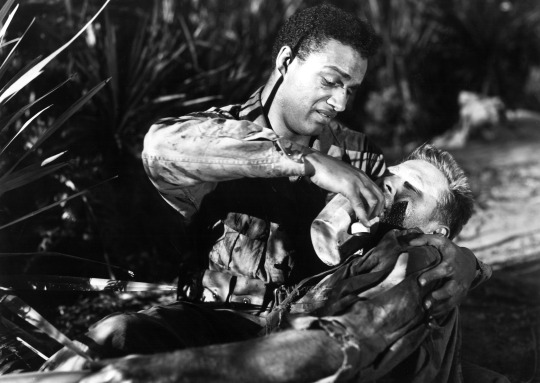
Canada Lee and James Edwards may not be household names, but they deserve to be honored for being trailblazers. These Black actors defied stereotypes and fought for dignified roles on stage and the big screen. They refused to play servants, opting for better roles than their predecessors had been given. And, they both had significant roles in what film historian Donald Bogle calls the four “problem pictures” of 1949: Lee in LOST BOUNDARIES and Edwards in HOME OF THE BRAVE. Both men were ahead of their time yet tragically died far too soon. Let’s take a look at the lives of these two extraordinary individuals.
From a young age, Canada Lee rebelled against the concept of living a normal humdrum life. He wanted to be someone extraordinary. Lee studied violin and piano as a kid with hopes of becoming a musician. When that didn’t pan out, the restless Lee ran away from home at the tender age of 14 to become a jockey. He abandoned this career when he grew too tall for the sport. His next calling found him in the boxing ring, and by the age of 19, he was a professional fighter. He had a successful career as a lightweight and welterweight boxing champion until a blow to the head detached his retina causing him to lose vision in one eye. It was then that he found his calling at the Federal Theatre Project in Harlem during the late 1930s.
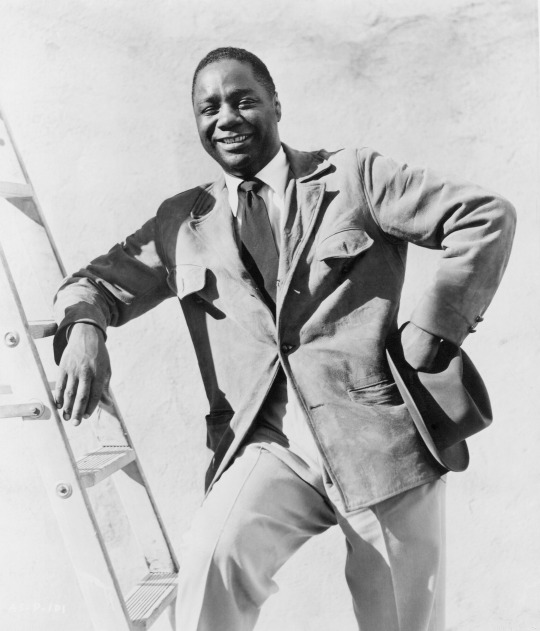
Lee proved to be an excellent actor, and with the guidance of Orson Welles, he was cast in a highly publicized all-Black production of Macbeth. He found success both on and off-Broadway in productions of Anna Lucasta, South Pacific and The Tempest. His breakout performance in Native Son put Lee on the map and Hollywood soon came calling. Lee only appeared in five films, including two films where he could put his boxing skills to good use: KEEP PUNCHING (’39) and BODY AND SOUL (’47). According to the website Black Past, “Canada Lee declared that he would only take roles that educated society about race and enhanced the image of African Americans.”
For Alfred Hitchcock’s LIFEBOAT (’44), he tweaked the dialogue to make his character less of a stereotype. He had a minor role in LOST BOUNDARIES as the understanding cop who guides a young mixed-race man. The film broke ground for tackling the difficult subject of African Americans passing as white. For his last film role, Lee and co-star Sidney Poitier were smuggled into South Africa by director Zoltan Korda for the production of CRY, THE BELOVED COUNTRY (’51) during the early days of Apartheid. Always proud of his West Indian roots, Lee became an outspoken civil rights activist. This made him a target of the House of Un-American Activities Committee investigation. Many believe that his fatal heart attack at 45 years old was the result of his being persecuted for his political beliefs.
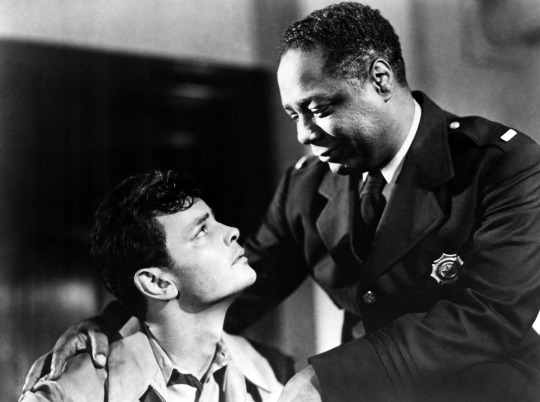
Much like Lee, James Edwards transcended stereotypical Black roles on screen. Edwards served as first lieutenant in the Army during WWII. After a particularly bad car accident that damaged his face and vocal cords, Edwards returned to the U.S. and started training in both public speaking and acting. He earned a master’s degree in drama from Northwestern University and became part of the same acting group, the Federal Theatre Project, as Lee. He made a name for himself on Broadway with the principal part in the play Deep Are the Roots.
Edwards then moved to Los Angeles where he started an acting school and got his start in the film industry. His silver screen debut was in Robert Wise’s film noir THE SET-UP (’49). That same year, Edwards landed one of the lead roles in HOME OF THE BRAVE, a WWII film about racism and psychological trauma. It proved to be his breakthrough performance but is also credited for paving the way for other Black actors, like Sidney Poitier, to take more substantial roles in future productions.
About his performance in HOME OF THE BRAVE, Bogle wrote, “his tension, restlessness, sensitivity and admirable attempt to connect to or at least understand a white world that has continually rejected him make this a fascinating movie.” Edwards often played Black soldiers in war films throughout his acting career. He also worked with top directors in big productions like Stanley Kubrick’s THE KILLING (’56), John Frankenheimer’s THE MANCHURIAN CANDIDATE (’62), Vincente Minnelli’s THE SANDPIPER (’65) and Franklin J. Schaffner’s PATTON (’70). When he wasn’t acting or helping fellow actors master their craft, Edwards worked as a freelance screenwriter for film and television and was a published novelist. He suffered a fatal heart attack at the age of 51, just as he was preparing for a new role.
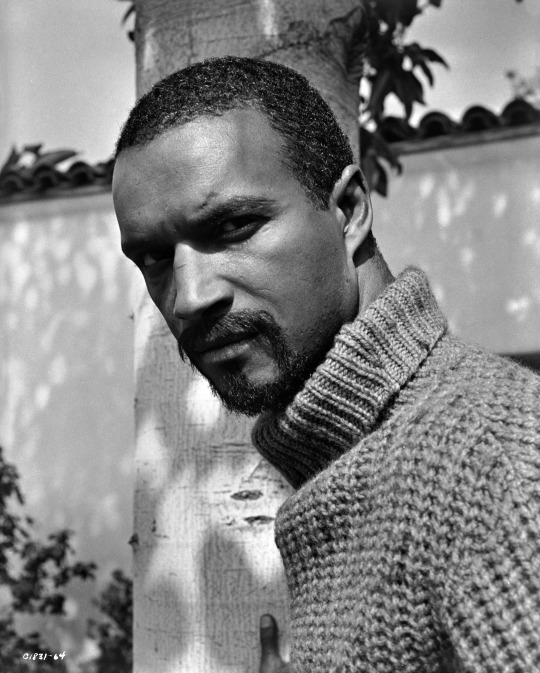
Both Lee and Edwards were able to rise above stereotypes to portray more authentic characters on screen. While Lee had a short film career and Edwards was often relegated to minor characters in his movies, they both proved to be pioneers that fought against the limitations Hollywood imposed on them. Their fight paved the way for Black actors to receive quality roles in film.
#James Edwards#Canada Lee#Black actors#Hollywood Black#Lost Boundaries#Home of the Brave#1949#Federal Theatre Project#TCM#Turner Classic Movies
83 notes
·
View notes
Text
Black People’s Contributions To The UK: A Very Small Sample
Women
Phillis Wheatley
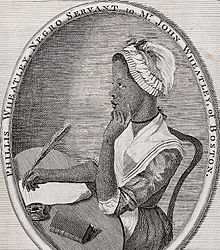
From West Africa.Sold as a slave to a family called the Wheatleys. Named after the family to whom she was sold and the vessel that transported her to America–‘the Phillis’.Wrote her first poem at 14 years old.First volume of poetry published in 1773.Moved to England at 20. Contributed to the anti-slavery movement. Read: Poems by Phillis Wheatley
Mary Seacole
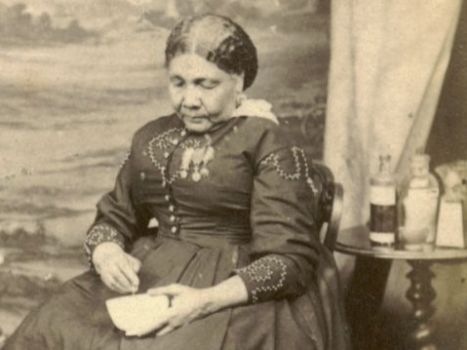
From Jamaica.Traveled to England in 1854 with the intention of an onward journey to Balaclava, Ukraineto assist the soldiers fighting in the Crimean War (1853-1856). War Office denied her request. Made her own way and established a boarding houseto successfullylook after the wounded British soldiers using traditional medicines.She then traveled relentlessly.Returned to England and is now buried at Saint Mary’s Catholic Cemetery, London.
Fanny Eaton

From Jamaica. A model for the Pre-Raphaelite Brotherhood and their circle between 1859–1867.Public debut was in Simeon Solomon's painting ‘The Mother of Moses’, which was exhibited at the Royal Academy in 1860.
The Mother of Moses - Simeon Solomon (1840-1905)
1860 Oil on canvas
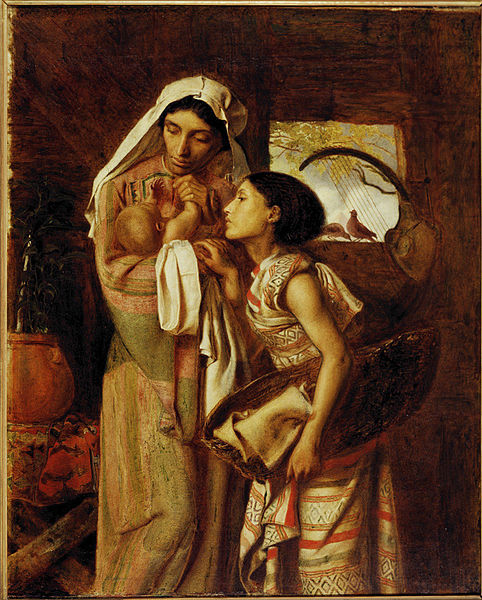
Lilian Bader
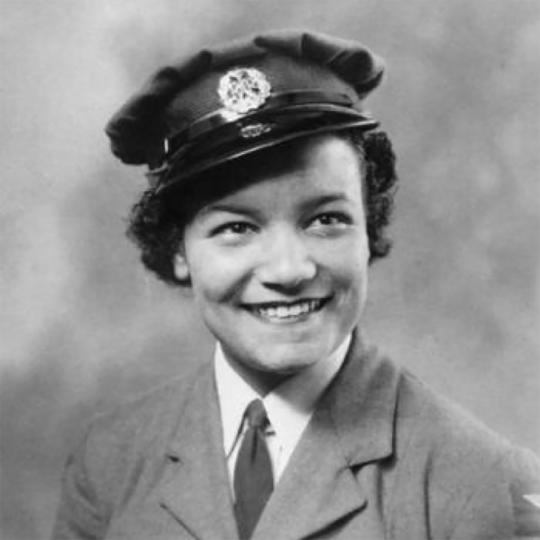
From Liverpool.The first black woman to join the British Armed Forces where she was: Canteen Assistant, Instrument repairer, Leading aircraft woman, and a Corporal. On receiving her degree from the University of London, she became a teacher.
olive Morris

From Jamaica.A member of the Black Panther Movement.Campaigned for rights of black people in Manchester and South London.Whilst at university expanded her activism to an international stage, visiting China and publishing an article from that visit. Founding member of Organisation of Women of African and Asian Descent (OWAAD) and,the Brixton Black Women's Group.
Margaret Busby
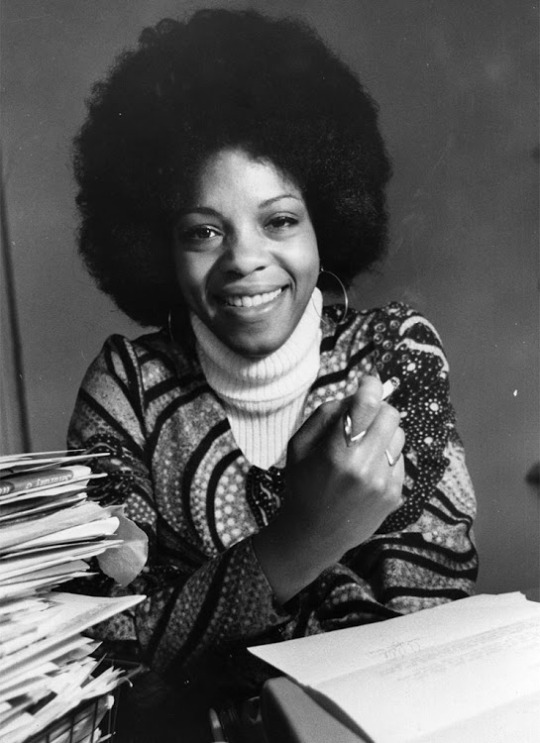
From Ghana. Youngest and first black female book publisher.Founded the publishing company Allison& Busby in 1967, alongside Clive Allison.A campaigner for diversity in publishing –co-founded Greater Access to Publishing (GAP).
Malorie Blackman

From London of Barbadian parents.Qualified as a computer scientist. Writer of children and young adult novels.Author of the Noughts&Crosses series.Eight Children’s Laureate–first black person in that role.Awarded an OBE in 2008.
Dr. Shirley Thompson

From London of Jamaican parents.Professor of Music at the University of Westminster.Recently named "one of the most inspirational Black British women" by the newspaper Metro.The first woman in Europe to conduct and compose a symphony within the last 40 years,composed to mark the Queen's Golden Jubilee in 2002, -New Nation Rising.A 21st Century Symphony.Named on the Evening Standard's Power List of Britain's Top 100 Most Influential Black People in 2010, 2011, 2012, 2013, 2014, 2015 and 2016.

From Jamaica. Barbara Blake-Hannah was the first ever black person to appear in a news role on British television in 1968. She paved the way for Moira Stuart, Trevor McDonald, and others.She was an on-camera reporter and interviewer on Thames Television’s Today programme. Since returning to Jamaica she has had a career in film making and written five books, including one in 1982 about the Rastafarian religion, which is her faith.
Dr. Youmna Mouhammed

From Mayotte, a small island off the coast of Southeast Africa. Dr Mouhamad has a PhD in polymer physics and is currently a Technology Transfer Fellow at SPECIFIC in Swansea University and is working on industrial coatings.She is pushing to improve the representation of black women within STEM, the disciplines of science, technology, engineering, and mathematics.She is the leader of the Black, Asian and Minority Ethnic (BAME) students in Engineering Network, formed in 2019. This network aims to progress racial equality by raising awareness of the challenges that BAME students and staff experience, then suggest interventions or strategies that investigate how to overcome the challenges.
Men
Ignatius Sancho
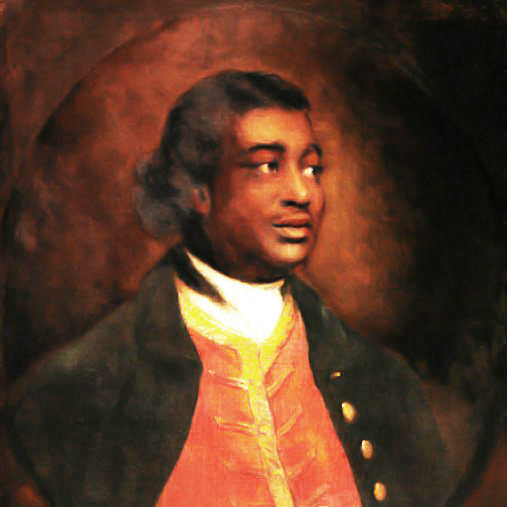
Born on a slave ship. Ignatius Sancho was an influential figure in the arts and is the first known black British voter. He is known for his plays, poetry,and music, and had a shop in London, where other creative people like him would meet up. He spoke out against the slave trade. Read: Letters of the Late Ignatius Sancho: An African
Oluada Equiano
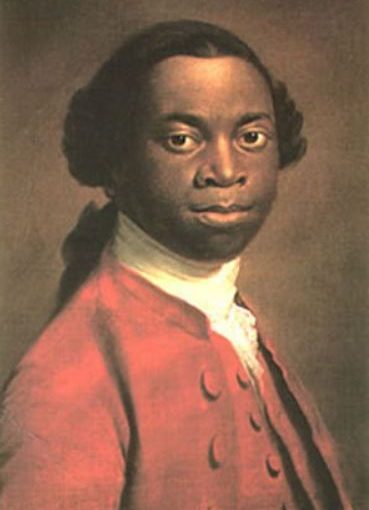
From Southern Nigeria. He was a slave but managed to buy his freedom and moved to London.Became very involved in the abolition movement. His book about slavery is one of the earliest accounts about what it was like to be a slave and it is one of the best-selling books on the topic. His autobiography (1789) ‘The Interesting Narrative of the Life of Olaudah Equiano or Gustavus Vassa, the African’ was a seminal piece to those working to abolish slavery and its sales made him a wealthy man.
George Bridgetower
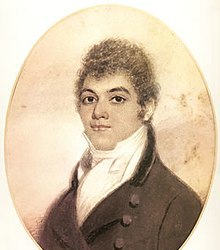
From Biala Podlaska, Poland-Lived in England for much of his life. Virtuoso Violinist Year of birth vary between 1778, 1779 or 1780.The son of an African father and a Polish mother. Said to be the older of two brothers, with his younger brother being a cellist. George was a student of composer Joseph Haydn and (once) a friend of Beethoven. Whilst friends, Beethoven dedicated a violin sonata to him, which was so hard to play many gave up.
Ira Aldridge
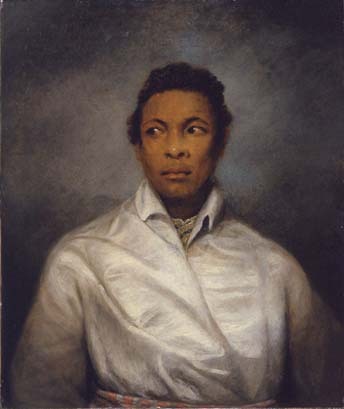
From New York – moved to the UK. Believed he stood a better chance of accomplishing his ambitions to become a brilliant and recognised actor.He became an important actor in plays at the theatre and was one of the highest paid actors in the world.He also became well known across Europe as a brilliant Shakespearean actor. Aldridge first toured to continental Europe in 1852, with successes in Germany, where he was presented to the Duchess of Saxe-Coburg-Gotha, and performed for Frederick William IV of Prussia; he also performed in Budapest. An 1858 tour took him to Serbia and to Imperial Russia, where he became acquainted with Count Fyodor Tolstoy, Mikhail Shchepkin and the Ukrainian poet and artist Taras Shevchenko, who did his portrait in pastel.
John Edmonstone
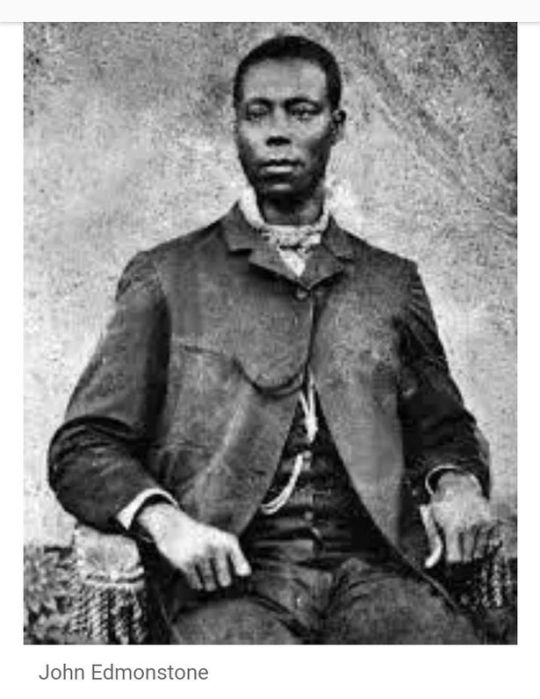
From British Guiana. He was born into slavery but gained his freedom. Becoming skilled in taxidermy John Edmonstone was a very important figure in the world of scientific research.He taught at Edinburgh University in the 19th century with Charles Darwin as one of his students. It is said that Darwin’s theories on how humans have developed throughout time resulted from the teaching of John Edmonstone.
Samuel Coleridge Taylor
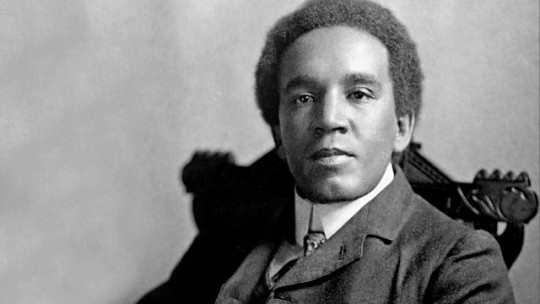
From London. Studied at the Royal College of Music in London.He partnered with several talented musicians, worked across continents and wrote many beautiful pieces of music enjoyed all over the world and still being enjoyed today. He died at the age of 37 from pneumonia. Compositions included: The Song of Hiawatha, Hiawatha Overture, Violin Concerto in G Minor. Read:The complete poems of Samuel Coleridge Taylor
Sir Learie Constantine
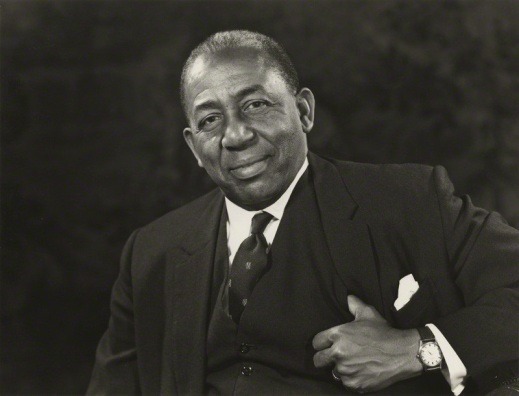
From Trinidad.A member of West Indian Cricket team who settled in Lancashire. Became England’s first black peer due to his political work which included relentlessly fighting for racial equality. Described as a cricketer, statesman and advocate of racial equality. Read: Colour Bar (1954) and, Learie Constantine and Race Relations in Britain and the Empire By Jeffrey Hill (Author)
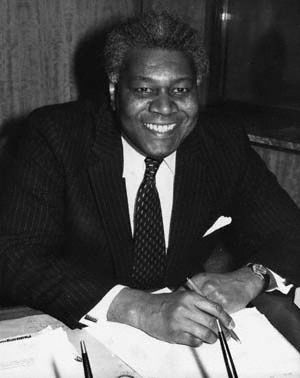
From Grenada.The second peer of African descent to sit in the House of Lords, He was the longest serving Black Parliamentarian. He was described as a revolutionary politician. He was a medical practitioner in Trinidad on completion of his studies (Edinburgh University). His involvement in politics was twinned with his medical practice. He was a funding member and leader of the West Indian National Party. He returned to the UK and lived in London. As a member of the House of Lords, he played a leading role in campaigning for the Race Relations Act 1976. He was outspoken on issues such as immigration policy, and in a debate on 24 June 1976 he noted, in part: "...it is a myth, that the fewer the numbers [of black immigrants] the better the quality of race relations. That is a myth, and it is a myth that has inspired the 1962 Commonwealth Immigrants Act, the Immigration White Paper of August 1965 and the Immigration Acts of 1968 and 1971. It is designed to placate the racialists, but it is a fallacy; for to the racialist or the anti-semite the only acceptable number is nought....(Immigration Policy debate, Hansard, vol. 372, 24 June 1976.)
Stuart Hall

From Jamaica. One of the Windrush generation and an Oxford graduate he was responsible for pioneering theories of multiculturalism and the first cultural studies course in Britain, which was offered by the University of Birmingham. The Observer referred to him as “one of the country's leading cultural theorists". His ideas and books, which included The Hard Road to Renewal: Thatcherism and the Crisis of the Left (1988), Formations of Modernity (1992), Questions of Cultural Identity (1996), and Cultural Representations and Signifying Practices (1997), inspired a whole new generation of multicultural academics and advocates.
Paul Stephenson

From Essex. Paul was Bristol’s first black social worker. As an equal rights campaigner he worked for the Commission for Racial Equality and the Press Council to ensure minorities were both working in newspapers and being covered fairly by them.He spent his life leading campaigns to change the way black people were being treated and it is said that his work played a part in Britain’s first Race Relations Act in 1965.
10 notes
·
View notes
Text
Juniper Publishers-Open Access Journal of Environmental Sciences & Natural Resources
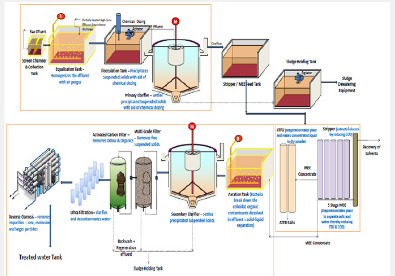
Treatment of Highly Concentrated Effluent Generated from Intermediate Chemical and Bulk Drug Industries Renovated with Tertiary Removal
Authored by Atun Roy Choudhury
Abstract
Effluent generated from the bulk drug industries is attributed with potential risk to the biotic and abiotic environment. The safe disposal of the same requires multiple stages of standard operation and stringent purification. In order to get rid of the ill impacts associated with the unscientific disposal of the bulk drug industry wastewater common effluent treatment plant (CETP) can be installed as a safe, inexpensive, and wholesome treatment unit. The present study, paid minute attention from the primary collection of the potentially hazardous wastewater to the reuse of the tertiary treated reverse osmosis (RO) process permeate. Initially, the collected effluent was stored in a bottom lined collection tank facilitate with a scrubber system and top enclosure to suppress the odour nuisance. Then effluent was immediately taken to the equalization tank and once homogenization got achieved the same was sent to the flocculation unit, where chemical coagulants were added with the effluent and forwarded to the primary clarifiers to remove the flocculants in the form of solid sludge.
Thereafter, the effluent was taken to the MEE feed tank and the bottom sludge was sent to the dewatering unit. The permeate was sent to the stripping column and the volatile organics were remove. In order to ensure optimal recovery the effluent of the stripper column was fed to the 5 stage multiple effect evaporator (MEE) system and successively followed by agitated thin film dryer (ATFD) set-up. Ultimately, the condensate was sent to the secondary treatment unit incorporated aeration facility and microbial digestion. The supernatant was conveyed to the secondary clarifier and successively to the tertiary treatment facility which comprises pressure sand filter, ultra filtration (UF), and RO. The end product was explicitly analysed to meet the prescribed standards and found to be feasible for reuse in the boiler. Both the primary and secondary sludge was safely discarded into the secured landfill. Thus, an absolute treatment system was delineated above which ensured optimal environmental safety
Keywords:CETP; COD; High TDS treatment; Pharmaceutical wastewater; Tertiary removal
Introduction
Two states located in the southern peninsula of Indian subcontinent namely, Telangana and Andhra Pradesh are considered to be the medicinal drug capital of the country which yields approximately 42% of the annual gross pharmaceutical production. Recently, these two states acting as a pioneer in the above delineated sector and showed a promising potential by having a continuous reciprocation with the market demand, technology up gradation, and modernized synthesis mechanisms. Its steady emergence in the pharmaceutical field has given it an international acclamation and plethora of foreign reputed pharma companies started capitalizing their investment into it [1,2]. Though drugs are often treated as life saving elements and trusted partner in health care industry, the production of it is always attributed to generation of highly toxic and complex wastewater. This aspect found to be contradictory to the progress pathway of the industry and thus, seeks a separate attention. Due to the complexity of the generated effluent it requires extensive treatment to bring down to the disposal or reusable limits. A single system consisting of a singular purification approach can not satisfy the prescribe figures due to high TDS and COD values (i.e. often ranging 1,00,000 mg/l and 45,000 mg/l respectively) [3-6]. Therefore a wholesome treatment system comprising multidimensional treatment facility is of utmost importance in order to treat the bulk drug industry wastewater. Furthermore centralization of the entire facilities under a single platform ensures the minimal environmental intervention with minimization of the land requirement. Hence, common effluent treatment plant is the ultimate solution to optimize the treatment expenditure attributed to waste treatment [7-10]. The treatment with the help of CETP requires similarity of the generated effluent. This is a feasible solution for those small scale industries, clustered together who can’t afford to install a separate individual treatment units at their disposal. It prevents them from any additional burden and extends opportunity to focus on the desired output without posing much additional cost to the stack holders [11,12].
The CETP capable of treating pharmaceutical wastewater should comprise the units such as equalization unit, flocculation unit, biological treatment unit, high TDS treatment unit, and tertiary treatment unit [13-17]. The polished effluent can be further reused into the system as a boiler feed or also for greenbelt development. Each facility play a significant role in reduction of a certain parameter and the malfunction of any unit can successively upset the performance of the further units and thus, the plant operation is a delicate issue which needs to be performed under extreme supervision [18]. Despite all those facts execution of CETP can face significant protest from the nearby residents due to the obnoxious smell generation during the ATFD operation and powder precipitation. Therefore, keeping all the social constraints in mind successful operation of the CETP is a challenging task [19,20]. A study conducted by Popuri [21] reported an ultimate contaminant removal of 98% or above can be achieved by a complete CETP. But, contradictorily, a study carried by Salunke et al. [22] reported the inefficiency of such plants under certain circumstances. Thus, in limelight of the above delineated context the primary objective of this study was to explore the feasibility of the industrial CETP towards the treatment of the bulk drug industry wastewater and application of the same to minimize the environmental hazard.
Study Area
The entire research work was carried out within the premises of the Common Effluent Treatment Plant (CETP) designed and maintained by IL&FS Environment in Fab City. The plant is located in an isolated industrial estate and ensures minimal human and environmental interventions. The influence topography and the geological location optimized the safety with constant progress and changes. The approximate coordinates of the plant include, North West Corner (17°12’5.70”N, 78°30’18.54”E); North East (17°12’5.64”N, 78°30’24.08”E); South West (17°12’1.99”N, 78°30’17.87”E); South East (17°12’1.65”N, 78°30’23.85”E).
Materials and Methods
Collection of Effluent from Industries
Process effluent from the pharmaceutical industries is transported to the designed location by means of 10m3 capacity GPS mounted closed tankers. The collection chamber was constructed with a design capacity of 150m3 connected to scrubber for control of odour pollution Thus, the collection tank can withhold approx. 15 truck unloading on regular basis.
Equalization of the Influent
Uniformity of the influent is the prime objective for the efficient working and thus, in order to maintain the minimal variation in the characteristics of the influent equalization tank was introduced. The influent mass was withheld in equalization tank over a period of 20 to 30 min and the tank has a capacity of 400m3. The influent in the tank gets homogenized due to air purges located at the bottom of the tank.
Flocculation
Flocculation tank is the set-up which serves as the platform for mixing. It is attributed with an agitator and has a volume holding capacity of 50m3. The agitator has a maximum working speed of 98 RPM, but 60 RPM was generally used for field application. Polyelectrolyte was used as a chemical coagulant and its efficacy was analysed against total solid removal.
Primary Settling
Once the agitation begins, the wastewater was brought into complete rest to ensure optimal precipitation. Settling of the particles with higher specific gravity often ensured in the primary clarifier, which indirectly released the burden of the high TDS treatment units. The facility comprises one primary clarifier with a volumetric capacity of 150m3 and the effluent from the primary clarifier use to be directly sent to the MEE feed tank for further purification (Tables 1-3).
Sludge Dewatering
The process sludge generated from both the clarifiers found to be highly humid in nature and thus, a moisture removal operation was quite mandatory. Excessive moisture was removed in sludge dewatering unit and the slurry got converted into bulky solid mass. The same was discarded in the secure landfill and environmental safety was ensured.
Removal of Volatile Compounds
The supernatant effluent from the MEE feed tank was directly conveyed to the stripping column via pumping station for further removal of volatile organic compounds (VOC). Contaminated water flows downward by gravity action and the air was forced through it. Thereafter, the contaminated air was purified by passing it through a demister before releasing it to the open atmosphere.
Effluent Densification
The end product of stripper column was further sent to the MEE unit for densification and volume reduction. The installed MEE setup has 5 nos. of calandrias and works in a forward flow mode. The raw juice from stripper column was introduced to the first calandria from the bottom and brought in contact with steam. Heat exchange, gasification, and condensation were few of the operation that was performed simultaneously. The condensate from the facility was sent to the tertiary filtration units; whereas, the concentrate was forwarded to the agitated thin film dryer for further solidification.
Secondary Treatment
The condensate from the high TDS treatment system was conveyed to the biological treatment unit for further polishing and removal of the organic contaminants. This facility incorporates aeration and aerobic microbial digestion. An optimum air supply rate of can be achieved in this system which is subjected to the influent BOD concentrations. A mixed consortium of microbial culture was used in the system by mixing the cow dung into the HTDS condensate with a ratio of 10:90.
Secondary Settling
The effluent from the biological treatment unit was retained in the secondary clarifier over a period of 1 hr to remove the settable solids from the stream before sending it to the advanced treatment unit. Once, the retention time got completed supernatant was sent to the tertiary treatment unit whereas, bottom sludge was conveyed to the sludge dewatering facility and discarded in a similar fashion.
Tertiary Treatment
The semi-polished effluent from the physicochemical treatment unit was supplied to the tertiary unit as an influent. The same was initially introduced to the pressure sand filter and successively followed by Ultra Filtration (UF) and reverse osmosis process. The permeate of RO yielded a satisfactory quality of effluent fit for reuse/recycle in the plant and industries for utilities and RO rejects is again sent back to the MEE. The process flowchart of the plant operations has been portrayed in Figures 1-4.
To know more about Juniper Publishers please click on: https://juniperpublishers.com/manuscript-guidelines.php
For more articles in Open Access Journal of Environmental Sciences & Natural Resources please click on: https://juniperpublishers.com/ijesnr/index.php
#Juniper Publishers PubMed Indexed Journals#Juniper Publishers Review#Environmental Biology#Geo Morphology#Oceanology#Soil Science
0 notes
Text
Evolution and Experimentation in South Asian Soundscapes
The South Asian music landscape, with India at its cultural core, has undergone remarkable transformations over the past few decades. A confluence of ancient traditions, regional flavors, and global influences have led to a musical ecosystem that is both deeply rooted and continuously evolving. At the forefront of this sonic revolution are influential figures who have embraced experimentation as a guiding principle. By blending classical foundations with international styles, weaving poetic narratives that transcend borders, and inspiring the younger generation of artists to push beyond established norms, they have collectively created a fertile ground for innovation. Exploring these icons sheds light on how their contributions have helped shape an ever-shifting tapestry of sounds and genres, ensuring that South Asian music remains vibrant, relevant, and universally appealing.
Ilaiyaraaja: A Visionary Bridging East and West Among the earliest pioneers in this wave of innovation was the legendary composer Ilaiyaraaja. Regarded as a musical polymath, he harnessed the power of orchestration, blending the intricate constructs of Carnatic and Hindustani traditions with Western symphonic elements. This approach broke barriers that had once confined Indian film music to a narrowly defined space. His compositions, layered with string arrangements, woodwinds, and choral harmonies, established a new lexicon for expressing deep emotional narratives. Ilaiyaraaja’s work set a precedent for others to follow. It taught subsequent generations of composers that cultural synthesis need not dilute tradition—it can enrich it. By demonstrating that a symphony and a sitar could co-exist, complement, and enhance one another, he revealed limitless potential in merging seemingly disparate musical worlds.
Manoj Muntashir: Words that Resonate Across Eras If a composer’s job is to craft landscapes of sound, the lyricist’s role is to populate these realms with stories, emotions, and ideas. This is precisely what Manoj Muntashir has achieved. Emerging in an era where the Hindi film industry constantly reinvents itself, he has penned lyrics that pay homage to poetic traditions while speaking in a tone accessible to contemporary listeners. Muntashir’s words form a bridge between eras, connecting the spiritual subtlety of ancient verses with the immediacy of modern storytelling. His skill lies not only in the metaphors he employs but also in his understanding of changing audience sensibilities. By doing so, he reminds us that even as musical backdrops evolve, the human experience remains a constant source of inspiration, ensuring that songs continue to matter deeply to listeners from every generation.
Sid Sriram: A Modern Minstrel Embracing Global Influences As the 21st century ushered in new technologies and a more globally connected audience, artists like Sid Sriram epitomize a fresh brand of experimentation. Trained in Carnatic classical music, his voice naturally carries the weight and nuance of centuries-old traditions. Yet, he effortlessly layers this foundation with elements drawn from soul, R&B, and Western pop. The result is a sound that resonates across cultural and linguistic boundaries. Sriram’s approach exemplifies a generation that has grown comfortable blending genres, viewing the world as a vast library of musical techniques. Through his art, he proves that tradition is not a static relic but a launching pad, enabling him to create dynamic, genre-fluid compositions that enchant listeners who may never have heard a raga before yet find themselves moved by its beauty in this modern context.
Anuv Jain: The Rise of Indie Authenticity While the film industry has traditionally served as the epicenter of Indian music, the rise of independent artists like Anuv Jain has ushered in a new era of authenticity and personal narrative. Freed from the constraints of cinematic storytelling, Jain’s approach is refreshingly intimate. His minimalist arrangements and acoustic textures stand in marked contrast to the grandeur of film scores, offering listeners a direct line to the artist’s inner world. This quieter, more introspective style resonates particularly with younger audiences, who seek music that mirrors their own quests for identity and purpose. By carving out a space outside of the mainstream, Jain and other indie musicians have expanded the palette of what Indian music can be. They have introduced new thematic concerns, forging direct connections with fans on digital platforms, and proving that experimentation need not rely solely on technical complexity—it can also arise from sincerity, vulnerability, and subtlety.
Karthik: A Polyglot Performer Spanning Genres and Borders At the heart of South Asian music’s experimentation is the notion that languages, regions, and genres can freely intermingle. The singer Karthik embodies this principle. Comfortable singing in multiple Indian languages, he navigates between classical renderings, filmi tunes, pop ballads, and fusion experiments with remarkable ease. This linguistic and stylistic fluidity mirrors the mosaic nature of South Asia itself, where multicultural communities share melodies that cross state lines and national borders. Karthik’s career trajectory highlights that experimentation can occur not only on a compositional or lyrical level but also in performance. By moving effortlessly among genres and linguistic traditions, he challenges the notion that an artist must remain confined within any single sphere. His body of work encourages new artists to embrace a broad spectrum of influences, reminding them that music is as infinite and borderless as one’s own imagination.
Conclusion: Sustaining the Culture of Experimentation What unites these diverse innovators—Ilaiyaraaja, Manoj Muntashir, Sid Sriram, Anuv Jain, and Karthik—is their shared commitment to evolution. Each, in their own way, demonstrates that experimentation is not a fleeting trend but a core tenet that sustains the vitality of South Asian music. They have collectively shown that blending classical and modern forms does not erode tradition. Instead, it perpetually revitalizes it, ensuring that fresh ideas emerge and that listeners remain engaged. Through their work, we see that the act of musical experimentation can honor the past, speak powerfully to the present, and pave the way for future generations. In a global age, where access to any style of music is only a click away, these artists affirm that authenticity and originality derive not from rigid adherence to established norms, but from the courage to reimagine what music can be. Each note they compose, lyric they write, or phrase they sing contributes to a grand, ongoing dialogue—one that will continue evolving as long as artists have the audacity to push boundaries, embrace new sounds, and welcome listeners into ever-expanding sonic landscapes.
0 notes
Link
Large numbers of us have more than one in the house, so every part can perceive what they like, not at all like the days of yore when there was only one set in the house, also, just to watch Doordarshan!
With channels in a wide assortment of dialects accessible today, TVs are an ally for all age gatherings.
Credit Satellite TV is worried about picking the top dth service provider in India, alongside ruining watchers for decision, to bring us assortment.
These days we watch the most recent worldwide films and TV arrangements, get the most recent news, sports refreshes, and a store of top-notch content, all gratitude to the blast of these DTH providers.
With alternatives in month-to-month bundles that can suit the many preferences of each family, long haul memberships, simple establishment and limits on connection elements, some extraordinary DTH re-energize contributions, combined with top-up simplicity of online installment also, and redesign, the Indian crowd is the best today.
DTH numerous brands reason restorative rivalry, and a push to give us the best.
Airtel Digital TV
Airtel Digital TV is named one of the best dth service provider in India.
The brand was launched by Bharti Airtel in 2008 and before long turned into the best DTH service provider in India. Today Airtel has around 400 channels including numerous HD or superior quality channels.
Its client base is two or three million across India and this isn't unexpected; Thanks to an assortment of channels covering diversion, film, way of life, schooling, way of life, sports, and news to give some examples of classes.
It's a given that Airtel has a ton of territorial language channels in every one of these classes.
Also, Airtel permits its clients to record programs and get numerous connections through one single dish.
It will be advantageous when the whole lodging complex, structures, and friends buy into a similar provider and get colossal limits and modified bundles.
These days Android TV is additionally moving and Airtel has likewise dispatched an Android-based set-top box at a less expensive cost. This set-top box consolidates more than 500 satellite channels, online substance, the Internet, and that's just the beginning.
Dish TV
Dish TV was dispatched by Zee TV and is famous the nation over.
It is the most seasoned DTH service provider in India and still keeps up its situation as the main player by consistent updates in innovation and a wide scope of channels pulling in assorted crowds.
DishTV today remains the least expensive DTH specialist organization in India. They are the best cheap dth service provider in India and many people choose it for its affordability. Its moderate bundles have made it a top choice among low-pay and center pay families the nation over.
DishTV has a wide scope of channels in English, Hindi, and territorial dialects just as highlights like youngster lock, intuitive TV, games.
Like a large portion of the other DTH service providers, Dish TV has appealing combo packs, uncommon arrangements, and offers where clients get a heap of channels at incredible rates with loads of gifts tossed at them.

Tata Sky
Dispatched in 2006, Tata Sky was the second part of the DTH market in India.
A joint endeavor between the Tata Group and Twentieth Century Fox, Tata Sky is extraordinary compared to other DTH service providers in India today.
The expansion of HD channels just expanded its endorser base and Tatasky is known as a pioneer on the lookout for receiving the most recent innovation and dispatching applicable items, hence keeping its clients content with the most recent and most updated.
Home brand Tata Active channels offer cooking classes for youngsters going from instructive substance to cooking classes, dance classes, and that's only the tip of the iceberg, giving a bundle of significant worth added administrations to their clients through these channels.
The principal quarter-finals of the FIFA World Cup 2014 were being broadcast live in 4K UHD, perhaps the greatest wing in the Tatasky. Tata Sky was additionally offering clients the office to record, play and delay previously and rewind live TV.
Tatasky endorsers approach two or three hundred standard English and Hindi channels just like a wide variety of provincial language channels; it is pulling in Indians to each side of the country.
There are seriously valued membership bundles with add-on packs for HD and SD channels.
Videocon D2H
The greatest fascination of D2H is the assortment of channels it gives.
Clients can appreciate a huge choice of SD and HD channels with clear pictures and great clear solid that utilizes MPEG-4 innovation.
The brand offers its clients different membership bundles that pay attention to a scope of channels with reasonable additional items to the principle bundle that can take into account the entire family. The organization flaunts 650 channels and administrations the nation over, giving it a wide and assorted client base.
The organization offers four evaluations of set-top boxes, an assortment of promotions on extraordinary kids' channels, long haul memberships and colossal limits on re-energizes, regular receiving wire alternatives for numerous connections, and the sky is the limit from there; Gives its clients the chance to redo however much as could be expected.
Sun Direct
Sun Direct is the lone provincial part of the DTH business and spotlights on South India.
It offers standard English and Hindi channels however the principal center is around South Indian language channels.
It is a division of Sun Network, a Chennai-based DTH organization, and was dispatched in 2007.
With its attention on South Indian channels, it is the top dth service provider in India and a market pioneer around there yet has a little presence in the remainder of the country.
Language-explicit Dish TV bundles and costs are a significant fascination for specialty crowds and Sun Direct has caught an enormous portion of this market, all within excess of 10 million endorsers because of its engaged items.

Also Read:- Tata Sky Recharge Plans Bring a Wave in the Dth Industry
Make a decision
Indeed, as we have covered the top dth service provider in India, we might in any case want to reveal to you our top pick of these. We accept that these service providers are the top dth service provider in India ever. The justification for this is that they give an assortment of administrations at pocket-accommodating rates. With most supporters, Dish TV gets our vote. What's more, as the actual organization says – when you get Dish TV STB, you get something other than TV. So what is the thing you would say you are sitting tight for? Search the full box of channels and administrations with DishTV and other DTH service providers.
Since we have decided every one of the choices for you, feel free to get your pick!
#top dth service provider in India#dth service provider#best DTH service provider in India#best cheap dth service provider in India
0 notes
Text
Barrier Film for Flexible Battery Market Industry, Market Competitive Landscape, Industry Leading Players, SWOT Analysis Report By Application (Disposable Flexible Battery Rechargeable Flexible Battery ), By Type (Multilayer Barrier (MLB) Film Technology Thin Film Encapsulation (TFE) Technology ), | Statistify Market Research
Market Overview
The Global Barrier Film for Flexible Battery Market Research Report estimates market report value, considering the application and regional segments, market share, and size, while the forecast for each product type and application in the segment. The research on different sections including opportunities, size, growth, technology, demand, and trend of high significant players has been explored. Then, it gives detailed profiles of the key players as a part of the competitive landscape of the Barrier Film for Flexible Battery market. The report offers statistics and information on market size, shares, and growth factors from 2021 to 2028. It also investigates the role of the important market players involved in the industry including their corporate overview, financial summary, and SWOT analysis. The report is all around made by considering its essential data in the overall Barrier Film for Flexible Battery market, the essential components in charge of the interest for its products and administrations.
Methodology
The examination of the report is carried on different essential and auxiliary information sources. The essential sources incorporate conduction interviews with various industry experts, providers, wholesalers, and other included experts. The optional sources incorporate an audit of measurable information from public statements, government sites, yearly reports of the organizations, and other significant records. During interviews, these essential and optional sources give selective data, which goes about as approval from worldwide market pioneers. Admittance to a broad interior storehouse and outside restrictive information bases encourages this investigation to address questions and insights about the market. Additionally, the report utilizes the top-down way to deal with survey the figures for each portion and to counter-approve them with the base up methodology.
Request a sample Report of Barrier Film for Flexible Battery Market @ https://www.statistifymarketresearch.com/reports/barrier-film-for-flexible-battery-market/sample-request-35932
Report Summary
This report aims to examine the developments of the Barrier Film for Flexible Battery market including its market improvements, developments, positions, and others. This Research helps in understanding the dynamic condition, the market’s significant players, and driving brands. The Barrier Film for Flexible Battery market five-year period can evaluate how the market is forecast to evolve. This analysis gives an examination of various segments that are relied upon to witness the quickest development amid the estimated forecast frame. Recognize the most recent Barrier Film for Flexible Battery improvements, share, and systems utilized by the significant market. The Barrier Film for Flexible Battery Market report executes the great study of Price and Gross Margin, Capacity, Production, Revenue, current Barrier Film for Flexible Battery market’s geographical zones, technology, demand-supply, Consumption, Import, Export, Market Drivers and Opportunities. The report also explains in deep what the market definition, classifications, applications, and market are. This research study is a valuable source of understanding data for business strategies, growth analysis, historical & futuristic cost, demand, and supply data. This report has all the company profile for the top players and brands and along with that the report also contains a synopsis of market definition, classifications, applications, and market trends, and the Barrier Film for Flexible Battery market drivers and restraints that are derived from a well know method called SWOT analysis.
For This Report @ https://www.statistifymarketresearch.com/checkout/?currency=USD&type=single_user_license&report_id=35932
By Application (Disposable Flexible BatteryRechargeable Flexible Battery), By Type (Multilayer Barrier (MLB) Film TechnologyThin Film Encapsulation (TFE) Technology),
Market Segmentation
With proper market segmentation, the analysis becomes much clearer and more comprehensive. The report provides a comprehensive segmentation of the global market for Barrier Film for Flexible Battery based on the sales, income, growth rate, and market share of each segment. The program, end-user, and nation are the key segments evaluated. The data tables and related graphs are seen in the paper, making it easy to understand the analysis. To gain a competitive advantage, it is necessary to understand the principal operating approach of the rivals, market performance in the past, and product & service portfolio to frame a better business strategy. It encourages stakeholders to classify each submarket strategically concerning each submarket’s growth pattern and market contribution and to establish innovative expansions, partnerships, new product launches, and market acquisitions.
Regional Analysis
The report, which covers North America, South America, Europe, Asia Pacific (APAC), Africa, and the Middle East, similarly contains a regional and country-level examination of the market. The market is totally analyzed in each area, mulling over the unmistakable confirmation of commonplace market examples, impediments, and open entryways for improvement. It is evaluated that North America, the staggering country in the XXX market will show great advancement during the assessed time span. The improvement would be possible because of marketing examination instruments and because of existing players that are positively gotten comfortable with the market since the beginning. Despite that, organization associations, associations, outcast administrators, etc are channelizing their undertakings to make customer-driven things which will moreover add to the improvement in this region. Rising revenue, extended compensation, pattern setting advancement, and contraption, close by the ventures for spreading the regard for the need, will most likely cause the Barrier Film for Flexible Battery market to grow essentially.
Full Report Summary of Barrier Film for Flexible Battery Market @ https://www.statistifymarketresearch.com/barrier-film-for-flexible-battery-market
About Statistify Market Research
With years in extensive and niche market research, we at Statistify Market Research strive our best to understand the dynamic and complex structure of markets around the globe and provide accurate customized solutions that can constructively derive progressive and profitable growth to our client base. We take immense pride in introducing ourselves as one of the leading market research companies in India to assist and support a range of Indian companies small as well as large to launch and strongly sustain their brands over the years.
Contact Us
Statistify Market ResearchOffice Address:- 156, Sector 9 Vasundhara Aptts Rohini, New Delhi 110085 INTelephone Number (+44)162-237-1047Email ID:- [email protected]
0 notes
Photo

Rohit Shetty’s Simmba, the most-recent blockbuster of his sensational supercop brand starring Ranveer Singy, has been transformed into an animated series for young fans. The Bollywood-inspired POGO original production Smashing Simmba, premieres on Saturday, 14 November at 1pm on the leading homegrown kids’ entertainment channel. The show will be aired every day at 1pm. The series is produced by Rohit Shetty Picturez in association with Reliance Animation, a part of Reliance Entertainment.
Smashing Simmba follows the hilarious cavorts of the quick-witted, mischievous, and fearless teenager, Simmba, who aspires to be a police officer. A fun-loving prankster with endless tricks up his sleeve, Simmba spends the better part of his days nabbing villains and miscreants. Thick as thieves with his friends Ricky and Kittu Khabari, Simmba finds himself on exciting adventures which perfectly represent his catchphrase, ‘Mind is Blowing’.
Rarely perturbed by any situation or threat, swag is Simmba’s middle name. His tongue is his greatest weapon, spinning a web of words that confounds the bad guys. One final move - the infallible ‘Jumpy Chumpy’ - and the villains don’t stand a chance. The brave and supercool Simmba defeats the bad guys and leaves his mark – literally!
Rohit Shetty, the Ace Bollywood film director and producer, expressed, “An animation avatar of Simmba sounded exciting to me from the get-go, and it is amazing to see how the series has shaped up. The blend of comedy and nail-biting action, with young Simmba’s cool quotient, and funny traits, is sure to appeal to the young audience. I am eager for kids to experience the animated rendition of their favourite big-screen hero Simmba on POGO.”
Abhishek Dutta, South Asia Network Head for Cartoon Network and POGO, said, “Within the diverse genres of homegrown animation, Bollywood has emerged as a theme widely appreciated by young fans. When Indian cinema’s most popular characters are presented in animated universes with relatable stories, kids absolutely love it. We are excited to associate with industry stalwarts Rohit Shetty and Reliance Entertainment for this unique venture, and Diwali is the perfect time to celebrate this partnership.”
He added, “Following the recent launch of Titoo, POGO has been strengthening its offerings of popular and premium homegrown kids’ entertainment content. ‘Smashing Simmba’ is exactly the kind of locally-made and relatable show that will delight our young viewers. I’m sure kids will extend the same love to our new hero, Simmba, that they have for all our shows and characters over the years.”
Shibasish Sarkar, Group CEO, Reliance Entertainment, said, “We are thrilled to be a part of this exciting new show with a pioneering channel POGO which has championed the evolution of kids’ entertainment in India. Given the channel’s vast and growing viewership comprising kids across the length and breadth of the country, there could be no better partner for Simmba’s foray into the kids’ entertainment space.”
Tejonidhi Bhandare, COO, Reliance Animation, commented, “The Indian animation space for kids is evolving rapidly along with its viewers, and there’s not been a better time for us to experiment with stories, characters, and backdrops. Cinema-inspired IPs, featuring characters who are loved for their memorable personalities and nuances, have massive potential to
become popular properties. ‘Smashing Simmba’ is an excellent example of how creatively Bollywood and animation can come together, opening avenues for endless possibilities.”
POGO’s nationwide launch for Smashing Simmba includes high-octane promotional campaign by way of extensive digital marketing, PR, influencer engagement, brand integrations along with on-air activation. To amp up the buzz and excitement, the channel will unveil an exhilarating Simmba-themed game as a lead up to the launch. The show will also be available in Hindi, and Tamil.
The first film under the newly incorporated joint venture was the October 2017 release Golmaal Again. Rohit’s next directorial project with Ranveer Singh & Sara Ali Khan starrer titled Simmba released on 28 December 2018. Both the films have broken multiple box office records and become one of the highest-grossing Indian films of all times.
In addition to Hindi films, Rohit Shetty Picturez has also rolled out plans to address the digital content consuming audience with original web series and cater to Rohit’s younger fans with animated content like “Little Singham” on Discovery Kids and Golmaal Jr. on Nick.
Also Read: Ranveer Singh and Rohit Shetty team up for Cirkus, film set for 2021 release
November 10, 2020 at 02:53PMRohit Shetty's Smashing Simmba to premiere on November 14 on Pogo https://ift.tt/2JQtYHj
1 note
·
View note